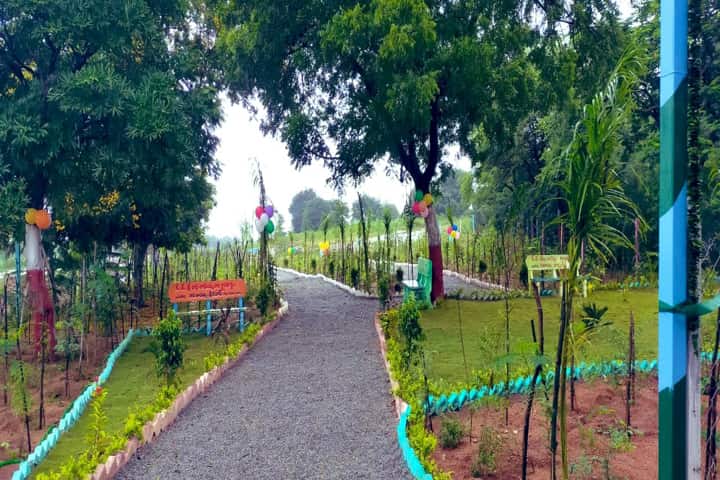Government’s premier policy think tank Niti Aayog has appreciated Palle Prakruthi Vanam, or nature park in villages, the flagship project of Telangana to enhance greenery in the state.
In its report titled ‘Best Practices in Social Sector: A Compendium’, Niti Aayog mentioned: “These Palle Prakruthi Vanam with dense plantations are home to several birds, insects and butterflies. An entire ecosystem has been created in a span of one year, improving the gene pool of local flora and fauna.”
Going further, the report also stated that these parks have increased soil carbon storage due to dense plantations at close spacing while the area traps the rainwater allowing no scope for runoff. This improves the moisture regime and groundwater.
A novel initiative of developing village parks “Palle Prakruthi Vanam” shaping up beautifully across hundreds of villages
The new Panchayat Raj act has brought renewed focus on improving green cover & amenities in rural Telangana pic.twitter.com/KRZI4BaGkp
— KTR (@KTRBRS) August 27, 2020
It was under Telangana ku Haritha Haram – the flagship programme of the State which aims to increase green cover in the region – that this initiative of creating village nature parks was started across 32 districts.
The parks use the Miyawaki planting model which focuses on creating mini forests with locally available native plant species. While setting an example of synergy and coordination between the forests and rural development departments, this programme is carried under the Mahatma Gandhi National Rural Employment Guarantee Scheme.
Having succeeded in Palle Prakruthi Vanam, the State Government is now planning Bruhat Prakruthi Vanam. This will result in creation of a dense forest-type plantation in an area of five to 10 acres. It will be planned in every mandal across the State. The authorities propose 2,725 BPVs in 545 mandals of Telangana with every mandal having five BPVs.
#PallePragathi, a brainchild of CM #KCR Garu is a role model for the rest of the Country.
Mukra-K in #Adilabad Dist. is one such village that has successfully planted 4,000+ saplings under #PallePrakruthiVanam🌳& 14,000+ saplings under @HarithaHaram🍀@KTRTRS @IKReddyAllola pic.twitter.com/oSt9h9bTLa
— Putta Vishnuvardhan Reddy (@PuttaVishnuVR) August 30, 2021
That is not all as the report while highlighting 75 best practices of the government, included in it, Telangana State Energy Conservation Building Code for Commercial Buildings. It said that with a cumulative built-up area of 1312 lakh square metres this code has saved energy of 336 MkWh per year.
The Aayog also pointed out that by incorporating the mandatory provisions of ECBC in the Telangana Municipalities Act, 2019, the State became the first one in India to do so.




















